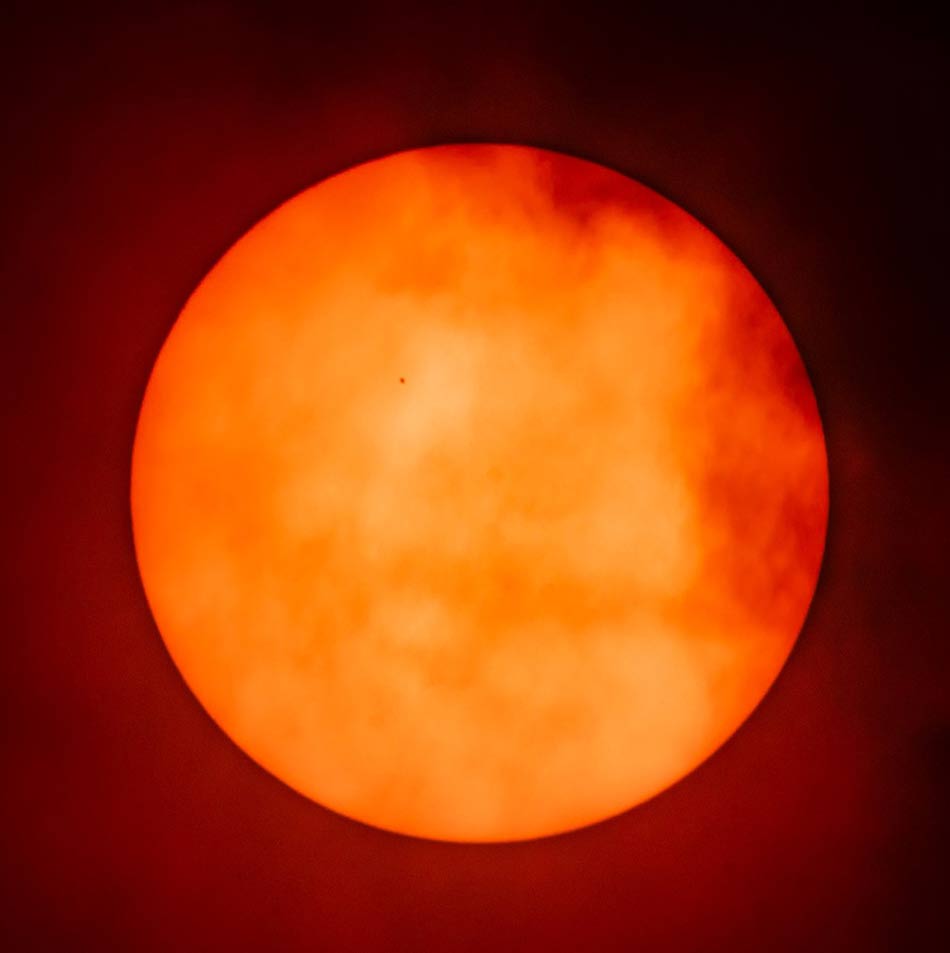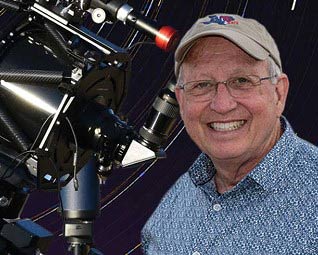Page 7


Photographing the Transit of Mercury
By Randall Light, MD
On November 11, 2019 there was a rare transit of Mercury. For about five and a half hours Mercury passed between Earth and the Sun. Because the next transit of Mercury visible in North America will not occur until May of 2049, this seemed like an opportunity not to be missed. I had hoped to take individual images and also to create a time-lapse video of the event. Unfortunately, the day was heavily overcast. Nonetheless, my equipment was set up to track the sun and photograph any part of the transit that became visible.
The transit began at 6:35 a.m. Sunrise followed at 6:50 a.m. The sky remained completely overcast until just before 10 a.m. when there were a few brief breaks in the clouds. The cloud cover was still so heavy that only a dim solar disk was visible. Finally, there were a few brief breaks lasting only a few seconds where the sun was much brighter. A few additional images were obtained before the sun disappeared for the rest of the transit period.
Photographing the transit under these conditions was a challenge. The light was constantly changing. Manual camera settings were not going to work. The camera was set to f/11 aperture priority, ISO 400, and allowed to adjust the exposure time based on the available light at the moment of the exposure. Fig. 1 was the best image obtained. The clouds add some texture. Mercury is small but clearly visible.
Equipment:
- AP Mach1 telescope mount in solar tracking mode
- Nikon D810A Camera
- Nikon 600mm f/4 lens with 2x teleconverter for an effective focal length of 1200 mm at f/8
- Thousand Oaks solar filter covering the full aperture of the lens
Settings:
- ISO 400
- Shutter Speed: 1/13 second
- Aperture f/11
Figure 1. Transit of Mercury - November 11, 2019


Dr. Randall Light, MD
Website: www.randalllight.com
Email: randy.light@gmail.com